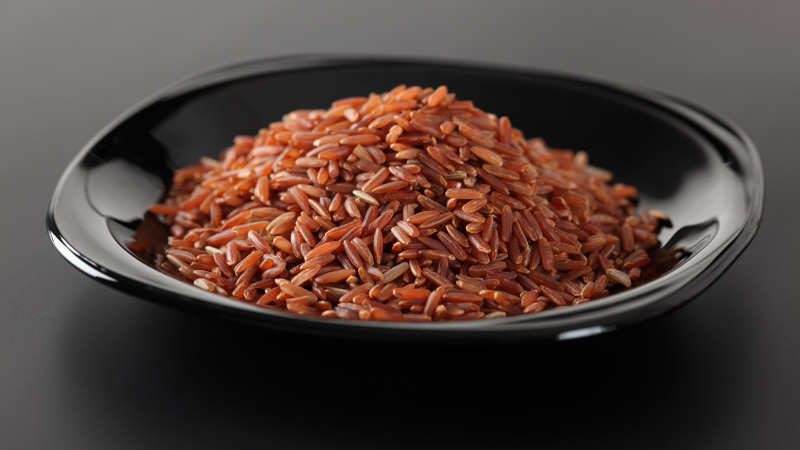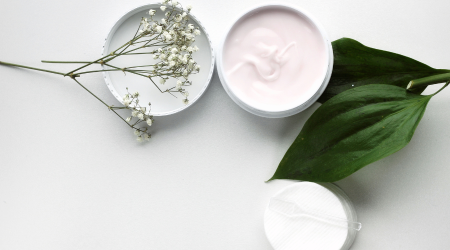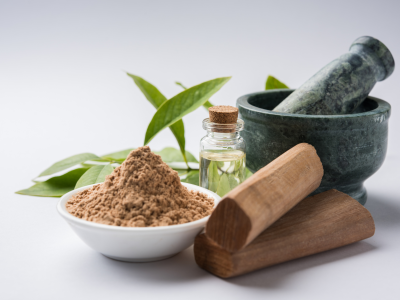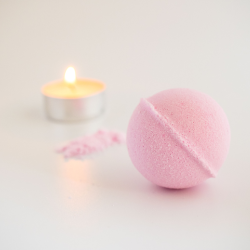
Rakthasali rice is a traditional and aromatic variety of rice primarily cultivated in the southern parts of India, especially in regions like Kerala and Tamil Nadu. The name "Rakthasali" translates to "blood rice," referring to its reddish hue, which comes from the reddish-brown colour of its grains. This rice is often appreciated for its nutritional value and unique flavour.
Key Features:
- Colour: The rice has a reddish tint, especially in the outer layer, which contains additional nutrients and antioxidants.
- Texture: It has a slightly chewy texture when cooked, making it ideal for dishes that require a bit of bite.
- Flavour: The flavour is nutty and earthy, which makes it a great complement to both spicy and milder dishes.
- Nutritional Value: Like other unpolished varieties, Rakthasali rice retains much of its bran, which is rich in fiber, vitamins, and minerals. It's considered a healthier option compared to white rice.
Culinary Uses:
- Kerala Dishes: Rakthasali rice is often used in traditional Kerala dishes like Puttu, Kanji (rice porridge) and Pulao. It pairs well with spicy curries and fish dishes.
- Sambar and Stews: Its unique flavour complements lentil-based dishes like sambar, as well as vegetable stews.
- Health Benefits: Because of its high fiber content and slower glycemic index, it's considered beneficial for people with diabetes and those looking to maintain a healthy diet.
This rice variety is also used in festivals and religious offerings in some parts of India, highlighting its cultural significance.
Rakthasali rice offers several numerous health benefits, thanks to its rich nutritional profile and the fact that it is minimally processed. This magical rice purifies blood and used to build immunity because of the high zinc content. Recommended for lactating mothers, diabetic patients due to its low glycemic index and patients including cancer. Here are some of the key health benefits of Rakthasali rice:
1. Rich in Nutrients
- High Fiber Content: Rakthasali rice retains much of its bran, making it a good source of dietary fiber. This helps improve digestion, prevent constipation, and contribute to better gut health.
- Vitamins and Minerals: It is rich in B vitamins (like B1, B2, B3, and folate), iron, and magnesium, all of which are important for energy production, red blood cell formation, and overall metabolic function.
2. Helps Manage Blood Sugar Levels
- Low Glycemic Index: Due to its higher fiber content and unpolished nature, Rakthasali rice has a low glycemic index (GI) compared to white rice. This means it releases glucose slowly into the bloodstream, making it a better choice for people with diabetes or those looking to control their blood sugar levels.
- It also helps in maintaining stable energy levels throughout the day, reducing the risk of energy spikes and crashes.
3. Antioxidant Properties
- The reddish-brown colour of Rakthasali rice comes from its high levels of anthocyanins, a type of antioxidant that helps neutralize harmful free radicals in the body. This can help reduce inflammation, combat oxidative stress, and lower the risk of chronic diseases like heart disease and certain cancers.
4. Promotes Heart Health
- The rice is high in magnesium and potassium, both of which are essential for maintaining healthy blood pressure levels. Magnesium also plays a key role in reducing the risk of heart disease and stroke by improving vascular health.
- The fiber in Rakthasali rice can help lower cholesterol levels, particularly LDL (bad cholesterol), thus promoting overall heart health.
5. Supports Weight Loss
- Due to its higher fiber content and slower digestion, Rakthasali rice can help in appetite regulation. It provides a feeling of fullness, preventing overeating and helping in weight management.
- Additionally, its low glycemic index ensures that energy is released gradually, keeping hunger pangs at bay.
6. Improves Digestion
- The fiber in Rakthasali rice plays a vital role in maintaining digestive health. It helps to bulk up stool, ease constipation, and maintain regular bowel movements.
- Regular consumption of fiber-rich foods like Rakthasali rice can help prevent digestive issues such as bloating and indigestion.
7. Enhances Skin Health
- The antioxidants in Rakthasali rice, along with its anti-inflammatory properties, can support skin health by fighting free radicals that contribute to premature aging and skin damage.
- The high levels of B vitamins, particularly niacin (vitamin B3), are important for maintaining healthy skin, and they may help prevent conditions like acne or eczema.
8. Helps Detoxify the Body
- The fiber in Rakthasali rice also assists in the natural detoxification process by promoting healthy liver function and supporting the elimination of waste products and toxins from the body.
9. Good for Bone Health
- Rakthasali rice contains essential minerals like magnesium and phosphorus, which are vital for maintaining strong and healthy bones. Magnesium also plays a role in calcium absorption, contributing to improved bone density and strength.
10. Improves Metabolism
- The B vitamins present in Rakthasali rice help in converting food into energy. Regular consumption may contribute to better metabolic function, which is important for overall vitality and energy levels.
How to Include Rakthasali Rice in Your Diet:
- Rice Porridges (Kanji): A popular dish in Kerala, Rakthasali rice can be boiled with water or coconut milk to make a nutritious, easily digestible porridge.
- Rice with Curry: It pairs wonderfully with spicy curries, stews, and dals.
- Pilaf or Pulao: Rakthasali rice can be used in pilaf or pulao recipes, adding a unique flavor and texture.
- Rice Puttu: Steam the instant puttu mix and enjoy with the black or white channa dal curry.
- Health-focused Recipes: Given its health benefits, Rakthasali rice is an excellent substitute for white rice in most dishes, especially for those looking to increase their fiber intake or manage blood sugar levels.
By incorporating Rakthasali rice into your diet, you can enjoy a range of health benefits, while also savouring a flavourful, aromatic rice variety that is deeply rooted in traditional Indian cuisine.

















Leave a comment